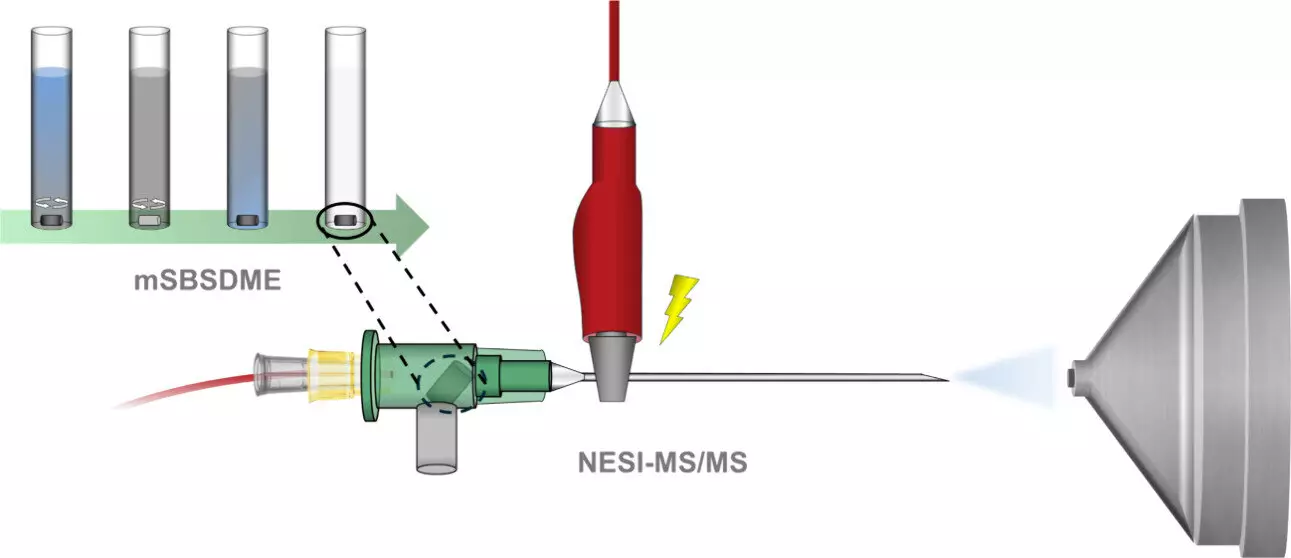In recent years, the landscape of drug use, particularly cannabis, has evolved markedly across Europe. With cannabis emerging as the most utilized illegal substance, its implications stretch far beyond mere legality; they encroach upon public health and societal values. With approximately 8% of adults reported to have engaged in cannabis consumption in 2022, it has become imperative to confront the issues stemming from its widespread use. The challenge is not only the health implications associated with cannabis consumption but also the need for effective detection methodologies to manage its effects responsibly. A pressing necessity has thus emerged for quick, non-invasive, and reliable techniques for detecting tetrahydrocannabinol (THC), the principal psychoactive component of cannabis.
Innovation in Cannabis Analysis Techniques
Recent breakthroughs from the collaborative efforts of the universities of Cordoba and Valencia present an exciting solution to the detection dilemma. Their pioneering work, recently published in the journal *Analytical Chemistry*, introduces a method that diminishes the time and resources typically associated with THC detection. By employing merely 0.25 mL of saliva—a fluid that is readily accessible and non-invasive—the researchers have ushered in a new era of drug analysis. This development not only streamlines the process but also highlights the need for innovative thinking in analytical chemistry.
The technique revolves around a refined method known as dispersive microextraction by sorption, which utilizes a small magnetic stirrer bar. This approach leverages the magnetic properties of specialized materials that extract THC molecules effectively. As researcher Jaime Millán Santiago elucidates, the interaction between the magnetic stirrer and the sample generates a vortex, facilitating rapid extraction of THC molecules. Thus, what previously entailed a cumbersome five-step process is now distilled into a mere two steps—a monumental leap towards efficiency.
From Extraction to Analysis: A Two-Step Revolution
The significance of this new method is underscored in its dual-phase protocol. Initially, THC is extracted using the miniaturized stirrer bar, enabling the trapping of THC molecules on magnetized particles. Following this extraction, the second phase entails transferring the coated magnet into a needle, where a specific high-voltage application disrupts the interaction between the extractant material and THC. This stage culminates in an electrospray that delivers the THC into a mass spectrometer for precise measurement. As Professor Marisol Cárdenas notes, the simplification to just two steps makes this new approach particularly appealing for routine laboratory incorporation.
The technological sophistication developed by the collaboration between these two universities signifies not just an academic victory but a potential shift in public health policy owing to its practical applications. It can provide law enforcement and healthcare professionals with a reliable tool to monitor and address THC levels in populations, paving the way for better drug regulation and health awareness.
A Bright Future for Public Health Initiatives
The implications of this research go beyond academic accolades—they could fundamentally alter how communities monitor cannabis use and its flagrant consequences. In a public health context, having access to accurate and timely detection methods can inform the decisions of lawmakers, healthcare providers, and educators. With the ability to quickly assess THC levels, strategies for harm reduction or educational initiatives could be implemented more effectively, hopefully leading to healthier societal outcomes.
Furthermore, the sensitivity and precision of this new detection method elevate its potential applicability in various fields, from forensic science to driving under the influence regulations. The rapid turnaround time of mere minutes could also benefit drug testing protocols, reducing backlog and ensuring timely responses in various professional environments, such as sports or public safety.
Partnerships in Progress: A Collaborative Future
This innovative technique is a testament to the power of collaborative research. The synergy between the University of Cordoba and the University of Valencia serves as a model for future interdisciplinary endeavors. By combining resources, expertise, and insights from analytical chemistry, they have identified solutions that hold promise for multiple stakeholders.
In a world where cannabis remains a flashpoint for debate, both from medical and recreational standpoints, the ability to accurately measure THC in a non-invasive manner could lead to more informed discussions. As researchers continue to refine and expand this technique, specialization and practical application could pave the way for new guidelines and a more grounded understanding of cannabis consumption.
In essence, the future of drug detection appears brighter than ever thanks to the innovative strides made in THC analysis. With the potential to bring about positive social change, it is not just a scientific achievement; it’s a movement towards a healthier, more informed populace.

